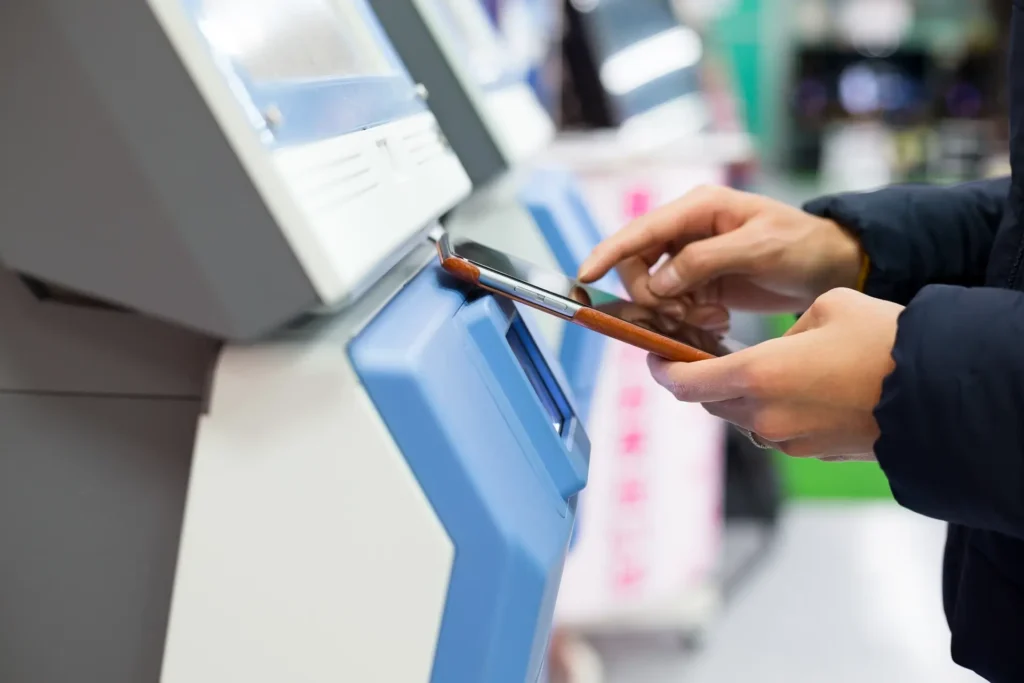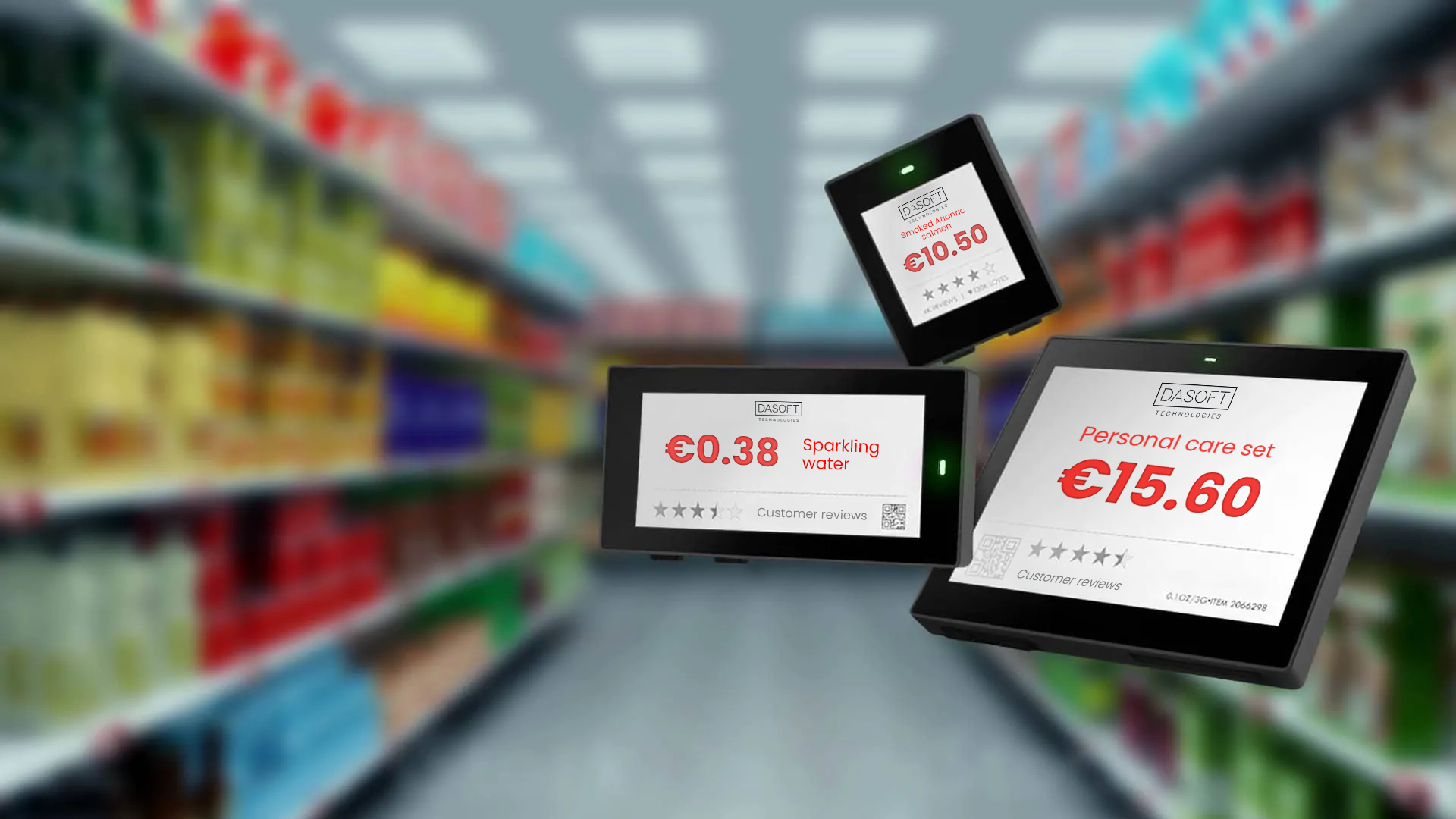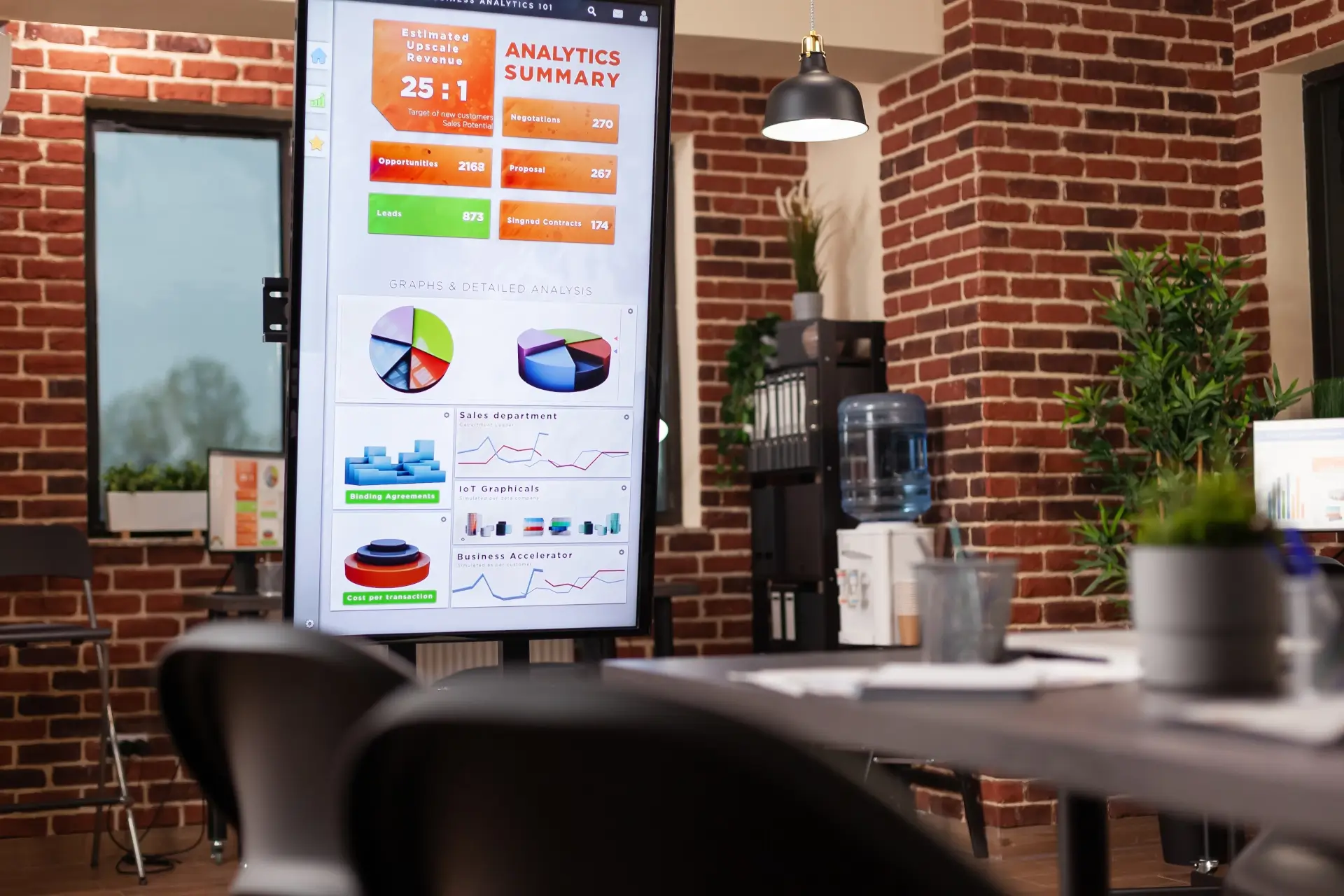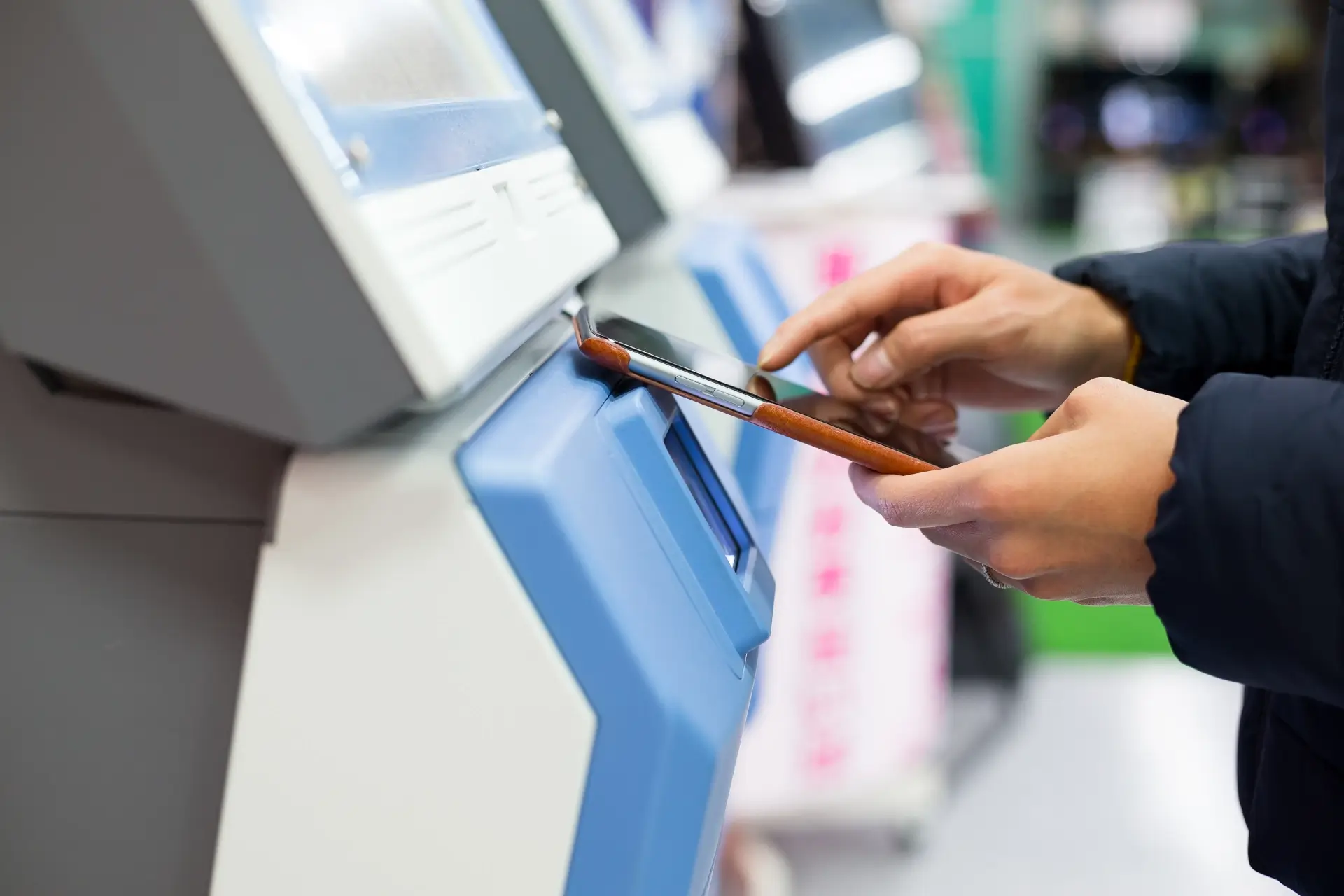Queue management systems are modern solutions that streamline customer service in high-traffic locations such as government offices, banks, hospitals or service points. They make managing visitor flow more transparent, orderly and comfortable– both for visitors and staff. Ticket machines help avoid chaos, reduce unnecessary stress and cut actual wait times. In this article we’ll explain in detail how these systems work, what they consist of and why implementing them is one of the best ways to improve service quality in public and commercial facilities.
Spis treści
- 1 What Are Queue Management Systems? Definition and Key Principles
- 2 How Does a Ticket Machine Work? Step-by-Step Operation
- 3 What Does a Queue Management System Include? Key Components and Features
- 4 Where Are Ticket Machines Used? Industry Examples
- 5 What Benefits Does a Queue Management System Bring?
- 6 Queue Management and Customer Comfort – Improving the Service Experience
- 7 Integration with Other Systems– How Ticket Machines Work with CRM, Booking Systems and Digital Signage
- 8 What to Consider When Choosing and Implementing a Queue Management System
- 9 The Future of Queue Management Systems– Automation, Mobility and New Technologies
What Are Queue Management Systems? Definition and Key Principles
Queue management systems, often called ticket machines, are integrated technological solutions designed to control customer flow in places where waiting is unavoidable. Their main purpose is to organize queues and ensure a fair, logical and transparent service process that avoids confusion and misunderstandings in busy facilities.
The system issues customers a numbered ticket– usually via a kiosk– and directs them to the appropriate service counter in order of arrival or by category of request. Depending on the configuration it can handle multiple queues at once, sort visitors by service type and even allow them to pre-book appointments online.
Modern queue management systems often come with extra features such as digital displays announcing ticket numbers, voice announcements or personalized tickets showing the service type, estimated wait time or location details. The entire system is run by specialized software that analyzes data in real time and helps optimize staff workloads.
These systems don’t just improve customer comfort – they also support effective resource management and enhance service quality, which is critical in sectors where speed, accuracy and customer satisfaction matter.

How Does a Ticket Machine Work? Step-by-Step Operation
Although for the customer using a ticket machine is as simple as taking a number and waiting their turn, the process relies on carefully planned visitor flow management. The whole system works through communication between devices and software that together coordinate the service journey from the moment the customer enters the facility to the completion of their visit.
It all starts at the ticket kiosk, usually located at the entrance. The customer selects their service type on the touch screen and the system automatically assigns them to the appropriate queue and prints a ticket with their number. In more advanced systems the ticket can also show estimated wait time, assigned counter number or even a QR code for feedback.
After getting their ticket the customer can sit in the waiting area and wait comfortably. Queue updates are shown on LED or LCD screens placed throughout the facility. In some cases the system also uses voice announcements or audio signals to assist visitors with visual impairments.
Meanwhile, staff use an operator panel, usually on a computer or tablet. The system automatically assigns them the next customer in line based on the selected service mode – whether it’s first come first served, priority handling or counter availability. Operators can also redirect visitors or mark requests as completed.
Behind the scenes the software manages the entire process, monitoring visitor flow, service times, average wait durations and other key metrics. This data allows administrators to optimize staffing levels, predict peak hours and plan operations with greater precision.
From the customer’s perspective the ticket machine is intuitive and easy to use, but in reality it’s an advanced system that improves facility efficiency, streamlines communication and significantly enhances both comfort and service quality.
What Does a Queue Management System Include? Key Components and Features
A queue management system is an integrated set of hardware and software that together form an effective infrastructure for managing customer flow. While it may seem simple on the surface it actually consists of many precisely coordinated components, each playing a specific role in the service process.
The centerpiece of the system is the ticket kiosk, an interactive terminal where the customer begins their queue journey. This device lets them select their service type, generates their number and assigns them to the right queue. Depending on the model ticket kiosks can feature touch screens, thermal printers, QR code or card readers and multiple language support.
Display screens showing current queue status
Another critical component is the display screens showing current queue status. Strategically placed screens show the next ticket numbers and their assigned counters. Advanced systems may also display informational messages, promotional content or statistical data. They often integrate with audio systems that announce numbers aloud to support accessibility for visitors with disabilities.
For staff there are operator panels, usually in the form of applications on computers or tablets. These panels let consultants call the next visitor, transfer them or mark the visit as complete. The operator interface can also integrate with internal systems like CRM or appointment booking.
All of these elements are connected via central management software (CMS) that handles communication between devices, data storage, reporting and the configuration of queues and user permissions. This software lets administrators manage the system remotely, adjust queue layouts, track statistics and analyze service performance in real time.
Systems may also include supporting solutions such as mobile apps for booking queue spots, info kiosks, integration with Digital Signage or customer satisfaction surveys after service.

A well-designed queue management system isn’t just about visitor convenience it’s a powerful tool for efficient facility operations. Every element: from the kiosk to the analytics panel – plays a crucial role in creating a streamlined, modern customer service environment.
Where Are Ticket Machines Used? Industry Examples
Queue management systems are used anywhere there’s a need to organize customer flow and deliver efficient, comfortable service. Originally associated mainly with government offices they’re now widely used in the private sector too from banks to healthcare facilities and retail networks.
Their flexibility means they can be adapted to very different operating environments.
In public administration offices they’re now standard. They help manage visitors with various service needs from issuing ID cards to registration or building permit applications. Ticket machines direct customers to the right counter without random queues or confusion.
Healthcare facilities like clinics, hospitals, diagnostic centers or specialist offices use queue systems to organize registration, appointment flow and directing patients to the right rooms. This eliminates long, disorganized lines and helps manage staff time more effectively.
Banks and financial institutions also rely on ticket systems to split customer flow by service type (like loans, cash operations or advice) and increase service efficiency. Customers know when and where they’ll be seen while staff maintain better control over appointments.
In customer service points for telecom providers, energy companies or other mass service providers ticket systems help categorize customers by request type – like new contracts, technical service or complaints. This significantly reduces wait times and improves staff allocation.
Retail chains, especially those with extra services (like finance desks, equipment service or online order pick-up) also use ticket systems to automate customer flow without physical queues.
They’re also found in transport hubs – airports, stations or passenger service centers – where speed, order and clear communication are critical for travelers.
As these examples show ticket machines have very broad and growing applications. No matter the sector the shared goal is improving customer comfort and boosting operational efficiency.
What Benefits Does a Queue Management System Bring?
Implementing a queue management system is an investment that quickly delivers real improvements to facility operations and customer service quality. One of the key benefits is organizing the check-in process eliminating the need for physical lines which boosts comfort and fairness for waiting customers.
The system automatically routes visitors to the right counters avoiding chaos and errors caused by unclear service roles. Each customer reaches the right staff member in the shortest time possible.
Additionally the system can manage multiple queues at once – for example for individual and business clients – which improves service flexibility and matches the facility’s needs.
There’s also an important organizational benefit. Ticket machines help manage staff better, track the number of customers served, average service times, peak hours or counter performance. This data enables optimal scheduling, problem identification and continuous improvement.
For the customer the system greatly enhances the service experience. No more standing in line with uncertainty or stress instead there’s clear information about their number and estimated wait time plus a calmer waiting area. Many systems also support booking in advance for even more convenient planning.
Professional, consistent communication via screens, audio announcements and a clear interface also builds the image of a modern, well-organized institution.
In summary adopting a queue management system isn’t just about handling more visitors or reducing wait times – it’s a powerful tool for managing, analyzing and developing service delivery in both public and commercial sectors.

Queue Management and Customer Comfort – Improving the Service Experience
A queue management system fundamentally improves customer comfort by changing how they experience the entire service process. Traditional queues mean physically standing in line, often with stress and uncertainty. A queue system replaces this with an organized, predictable experience that removes confusion and builds trust. From the moment they enter a facility with a ticket machine customers gain a sense of control, they choose their service, get a ticket number and clear information about their place in line.
This setup encourages relaxed waiting. Customers don’t have to constantly watch others or worry about being skipped. Displays and announcements keep them informed in real time so they can read, use their phone or simply wait comfortably. Knowing the estimated wait time also helps manage expectations and makes delays easier to accept.
Another important benefit is easily categorizing requests. A customer selecting a specific service (like “vehicle registration” or “consultation”) is immediately routed to the right staff member, speeding up service and reinforcing a sense of professionalism and order. No more frustration from joining the wrong line or explaining the issue multiple times.
Queue systems also create a calm, predictable and fair environment – vital in places serving elderly, sick or stressed customers like government offices, hospitals or service centers. Everyone gets clear, fair treatment.
Ultimately customers leave feeling respected and well served. A good experience not only enhances an organization’s reputation but also encourages loyalty and repeat visits.
Integration with Other Systems– How Ticket Machines Work with CRM, Booking Systems and Digital Signage
Modern queue management systems are increasingly part of a wider technology ecosystem within a company or institution. By integrating with other systems like CRM, booking platforms or Digital Signage they offer new functionality and greatly improve the entire service process.
Integration with CRM (Customer Relationship Management) allows for automatic customer recognition and personalized service. Entering details or scanning a code can identify the customer and route them to an advisor with access to their history and open cases. This speeds up service and makes customers feel seen as individuals.
Connecting the queue system to an online booking platform is another key step toward full automation and convenience. Customers can schedule visits in advance choosing a time slot and the system on the day automatically assigns them a queue number and counter. This reduces on-site wait times, evens out peak traffic and allows better staff planning.
Integration with Digital Signage is equally valuable. Queue numbers, status updates and counter information can be shown on visually appealing screens alongside promotional, educational or service messages. Customers not only know when they’ll be served but also learn about other services or news.
Linking to analytics systems also brings big benefits. Queue data, such as wait times, number of visitors or counter efficiency can be automatically analyzed and combined with other business metrics to support better operational decisions.
Thanks to these integrations the queue system isn’t just about managing lines. It becomes a central part of customer service strategy supporting personalization, automation and stronger customer relationships.
What to Consider When Choosing and Implementing a Queue Management System
Choosing and implementing a queue management system requires careful planning both technically and organizationally. While the goal is to improve customer service, achieving the full benefits depends on many factors from matching the system to the facility’s needs to choosing the right equipment and training staff.
A key step is assessing the real needs of the institution or business. A busy government office needs a different system than a small clinic or service point. Consider the number of customers, service types and staff. This will guide the choice of ticket kiosks, screens and software.
Choosing the ticket kiosk interface is also crucial. It should be intuitive, easy to use and available in multiple languages if needed. Accessibility is essential- devices must be user-friendly for people with disabilities and clear for users of all ages.
System integration is another big factor. A good queue system should connect to online bookings, customer databases, CRM and Digital Signage. This ensures a seamless, modern service experience.
It’s important to ask the provider what integrations are available and whether the system can be expanded in the future.
Technical support quality also matters. Even the best system will need updates, maintenance or help with issues. When selecting a provider check their experience, response times and support availability. Ensure the software includes an admin panel with reporting and analytics for continuous improvement.
Staff training is another essential part of rollout. Employees need to know how to use the system as operators, manage queues and assist customers confidently. Good preparation improves efficiency and avoids frustration for staff and visitors alike.
Implementing a queue system is an investment that can dramatically improve organization and reputation, but only if approached holistically with both technology and human needs in mind.
The Future of Queue Management Systems– Automation, Mobility and New Technologies
Queue management systems continue to evolve to meet growing service demands and customer expectations. Increasingly they’re not just simple ticket dispensers but part of advanced, integrated, mobile and intelligent service ecosystems. The future of this technology is all about more automation and personalized experiences.
One of the biggest trends is mobility. The ability to join a queue from a smartphone. Customers no longer need to be physically present to get a ticket. They can use an app or online form. This makes planning easier, reduces waiting-room congestion and lets customers track their place in line from anywhere.
AI and data analytics are also shaping the future. Systems can predict peak hours, recommend staffing schedules and dynamically manage queue configurations. Integrated with CRM they can recognize returning customers and tailor service to their history – boosting satisfaction and loyalty.
Modern ticket machines are increasingly equipped with biometrics, facial recognition or voice ID for contactless check-in and faster registration. These features are particularly valuable in places with high hygiene requirements or where speed is critical.
We can also expect deeper integration with omnichannel strategies – online bookings will seamlessly connect with in-person visits, video consultations, chats or phone support. The queue will no longer be purely physical or linear, it will adapt to a flexible, digital-first reality.
Ultimately all these advances aim at making customer service as smooth, intuitive and stress-free as possible. The queue system of the future won’t just “organize the line”– it will act as a silent, intelligent assistant enhancing comfort, efficiency and overall experience for every visitor.



